How to get rid of suriname mucoed in the kitchen
- Suriname mucoed
- Suriname mucoed larvae
- Fighting Surinamese Mucoed
It is extremely important to produce food products, because the health of people depends on the quality of the product. That is why the manufacturer is obliged to monitor the quality of what he supplies. Especially it is necessary to closely monitor the quality of the original product.
Cereal producers are well known for a variety of pests that can damage grain. Often, they also meet with the hostess who bought the infected cereals in the store.This is not just unpleasant to the consumer, but also negatively formed on the image of the manufacturer. One of these pests is Surinamese mucoed. What kind of insect it is, where it comes from and how it should be dealt with it should be clarified.
Harm to man
In flour, cereals and other products, dark-colored bugs can be seen - most likely, this is Suriname's mucoed. This pest grows to only 3.5 mm, it is difficult to notice in products with the naked eye. To familiarize yourself with its external features, you should carefully consider what the Surinamese mucoed looks like in the photo. He is different from another famous relative - red mucoed.
The development of the Suriname bug goes through the same stages as most insects: egg, larva, pupa, and adult insect. The pest prefers to settle in mills and granaries. From here he migrates to bakeries, to the bakery industry, to warehouses, store shelves and to customers' homes.
On a note!
Once in the flour or cereal, beetle mucoed gets down to business. Products are eaten not only by the larva of this insect, but also by the adult.Pest feces, skins from the larvae, cobwebs from cocoons and other muck enter the infected rump.
The lifetime of an insect is about 3 years (in favorable conditions). During this time, it is able to lay up to 600 eggs. One clutch contains 30 eggs, from which in just 30-75 days the same number of insects capable of reproduction is obtained.
The rate of development of the parasite depends on the conditions of its life. For mucoed, humidity and ambient temperature are important. 25 degrees and 65% humidity are considered optimal.
Pest eggs are very small - no more than 1 mm. Therefore, when buying and storing cereals it is very difficult to see. Infected goods should not be used as food even after heat treatment. To find out what this little bug is dangerous for a person, just look closely at the composition of spoiled cereals: there are crawling bugs, larvae, there is a huge amount of feces. The use of such cereals can cause severe allergies or cause poisoning.
Important!
Some, especially economical, hostesses believe that it is good enough to sort the cereal and heat it in the oven.However, the croup, eaten by the flour, does not have health benefits. No matter how thorough the inspection is, many eggs will go unnoticed. You need to know how to get rid of Suriname mucoed so that he does not have time to spoil the rest of the products.
We get rid of the pest
The destruction of the Surinamese mucoed is mandatory for grain producers. The premises in which the cereals are stored should be regularly inspected and treated with special chemicals.
It is quite effective to store dried grain at low temperatures. The insect dies at a temperature below -15 degrees, so this should be taken into account when making granaries.
If, despite all efforts, a mucoed appeared in the kitchen, it is urgent to find out how to poison such a “guest” and what more can be done.
Important!
Mukoed lays eggs in various places, so to destroy it is not easy. The destruction process should include a general cleaning of the kitchen with a thorough treatment of all cabinets and shelves.
To combat the Surinamese mucoed, the following means will be required:
- Disinfectant;
- Bay leaf;
- Garlic;
- Glass jars with tight-fitting lids;
- Muscat
Acetic solution can be used as a disinfectant. The concentration of vinegar in it should be enough so that the smell of the product can be clearly felt in the cabinet.
Next, you should act in stages:
- All purchases and stocks are carefully reviewed. Even if a small number of bugs are found in one package, this package should be discarded. Well inspect the flour, crackers, even if the packaging is closed tightly. Favorite product of Suriname flour flour is flour. Even when it seems clean, it is better to throw it away;
- Rinse all cabinets, shelves, window sill in the kitchen with vinegar or other disinfectant. To destroy as many bugs and their eggs as possible, you should do it more than once. Groats that have not undergone a mucoed invasion should be removed in the freezer or on the balcony (in winter). In these places, packaging should be left for at least 14 days. After that, if the bugs did not appear, pour the cereal into jars, the lids of which fit as closely as possible.
- In the washed and dried cabinets put a bay leaf,peeled garlic cloves - a flat with these flavors will be protected from a large number of food pests, which must be regularly removed.
- Put nutmeg in the middle of the scotch tape and put it inside the kitchen cabinets. In this way, you can catch the remaining adults of the Surinamese mucoed.
Prevention
It is possible to get rid of the mucoed, but it is easier to ensure that this harmful food bug could not even take root in your house.
- Prepare their cotton cloth bags. Boil in strong salt solution for half an hour. Leave to cool in water, then squeeze and dry. Iron iron. If you store the cereal in these bags, Suriname flour will never appear in them.
- Since there is a high probability of “infecting” their stocks with the “newcomers” brought from the store, all new cereals should be placed in “quarantine” in the freezer for 3-4 days. Raisins and nuts should always be kept in the refrigerator. Pour the flour and cereals either in a glass dish with tight lids, or in salted bags.
Compliance with simple preventive measures will help you never know who the Surinamese flour is, and what harm it does to cereals.

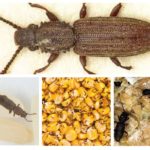
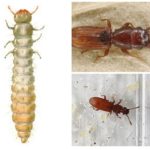
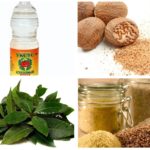
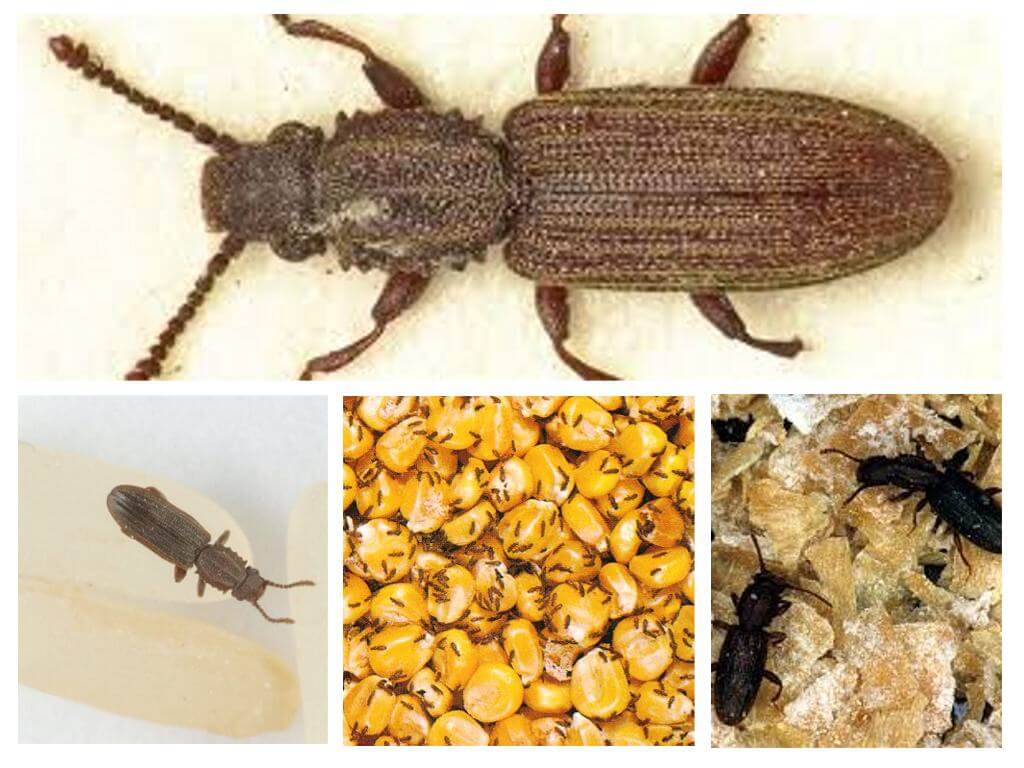
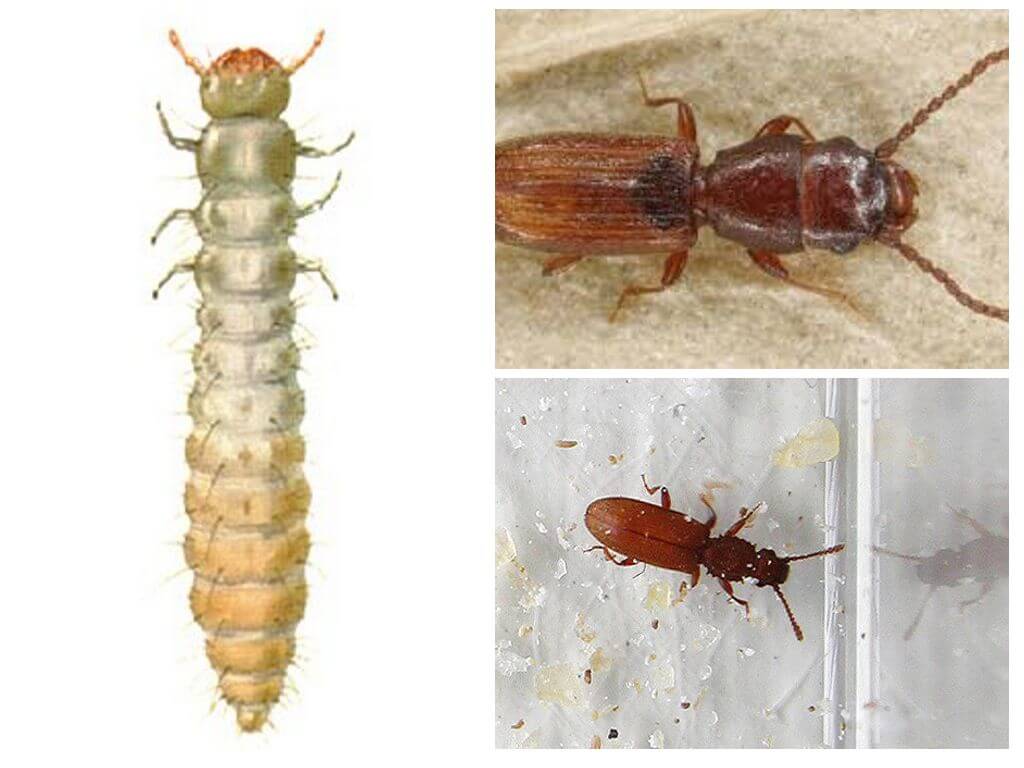
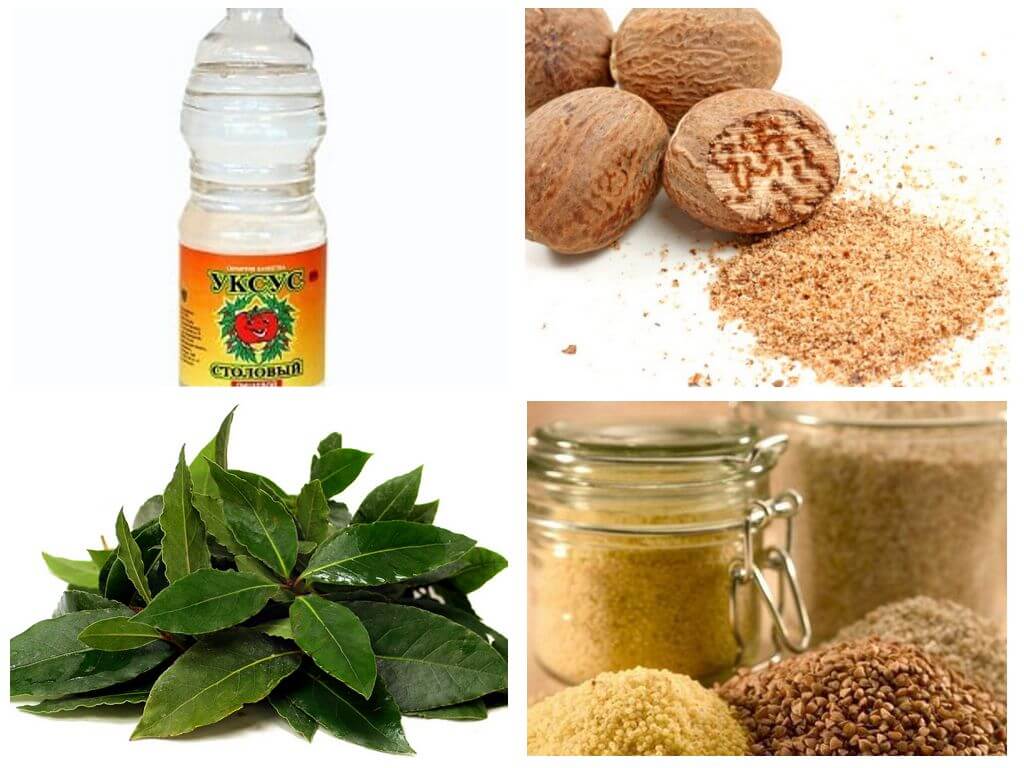

 (votes: 4, Average rating: 4.75 out of 5)
(votes: 4, Average rating: 4.75 out of 5)


